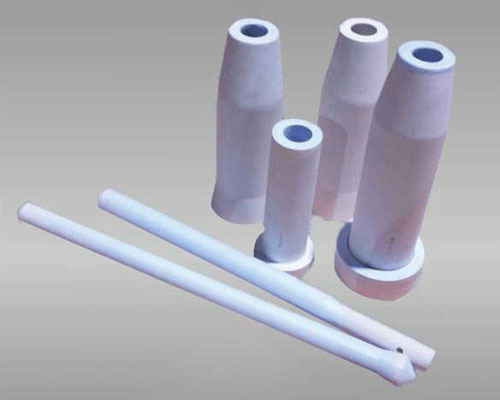Guide furnace is the process of transporting the melt with adjusted composition and temperature from the smelting furnace to the static holding furnace.
Guide furnace methods include flow tube method and tipping method.
The flow tube method is used when there is a gap between the smelting furnace and the static holding furnace. With the help of the drop between the smelting furnace and the static holding furnace and the static pressure of the melt, the melt is transported to the static holding furnace along the flow pipe.
1. Requirements for flow tube. The length of the flow tube should be compatible with the drop of the two furnaces: the inner diameter of the flow tube should be slightly larger than the size of the flow eye of the smelting furnace. The flow tube should have high refractoriness, good insulation performance, small heat capacity, light weight, high strength, long life, and it will not be corroded by the melt and will not pollute the melt.

2. Before the guide furnace, carefully clean the flow tube and put the flow tube in advance to fully preheat the flow tube to avoid the occurrence of condensate tube accidents.
3. When the discharge tube is used, the joint between the flow tube and the flow trough is tightly plugged with aluminum silicate felt to prevent aluminum leakage in the guide furnace.
4. Before opening the flow eye, evenly sprinkle a layer of flux on the outlet launder. After discharge, adjust the control valve to raise the level of the metal liquid in the launder as soon as possible, close the open drop, and strictly prohibit tumbling and slagging. Then sprinkle a layer of powdered flux on the liquid surface.
5. After the liquid level in the static holding furnace closes the lower mouth of the flow tube, sprinkle a layer of covering flux to cover the static holding furnace.
6. Before the special products guide the furnace, evenly sprinkle a layer of powder flux into the molten pool of the static holding furnace for secondary cleaning.
The tipping method is used when there is no drop between the smelting furnace and the static holding furnace. When guiding the furnace, the liquid metal should flow under the oxide film on the surface, and the flow rate should not be too fast, so as not to cause the impact of the melt and cause tumbling. The flow rate should not be too slow, too slow will cause a long lead time and a large drop in melt temperature.
Before the pilot furnace, it is necessary to confirm that the chemical composition of the melt in the melting furnace meets the requirements of the standard, and the temperature of the melt meets the requirements of the regulations. Generally, the temperature of the smelting furnace is not lower than the upper limit of the casting temperature. It cannot be higher than the upper limit of the melting temperature. However, some alloys have an upper casting temperature of 750-770 ℃. Its instantaneous temperature is allowed to be 10-15 ℃ higher than the casting temperature.

